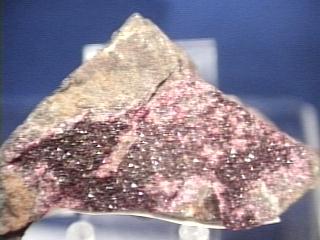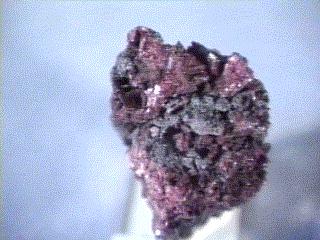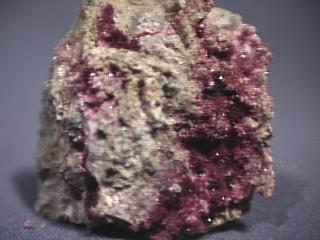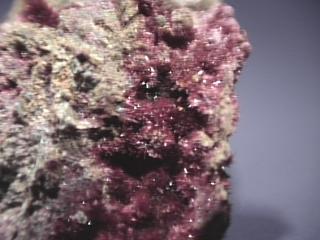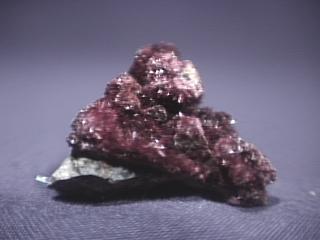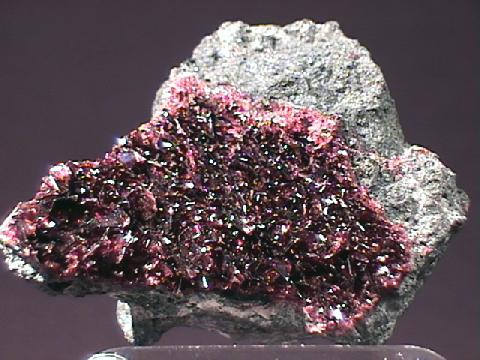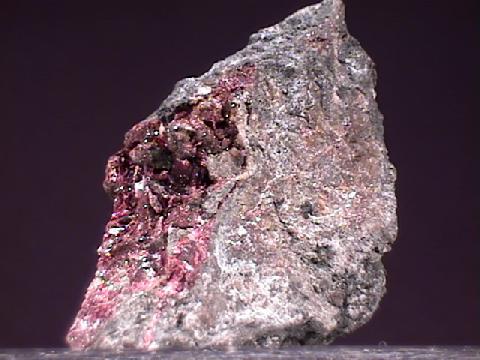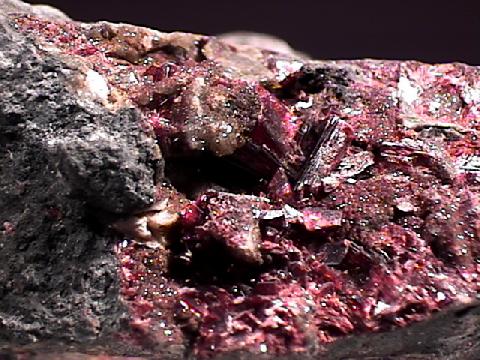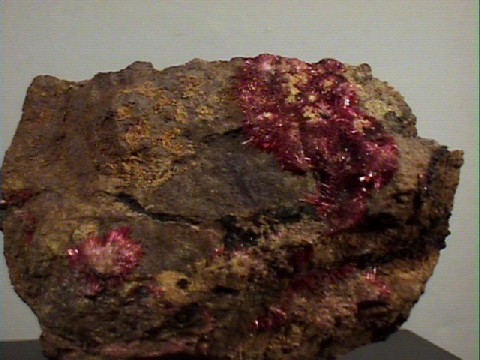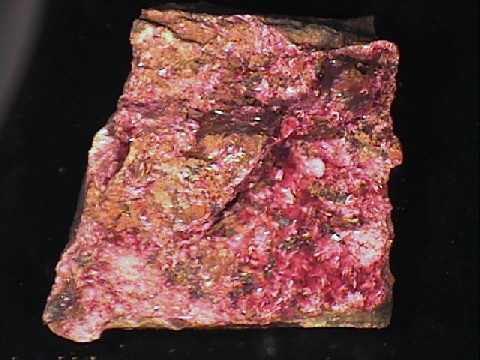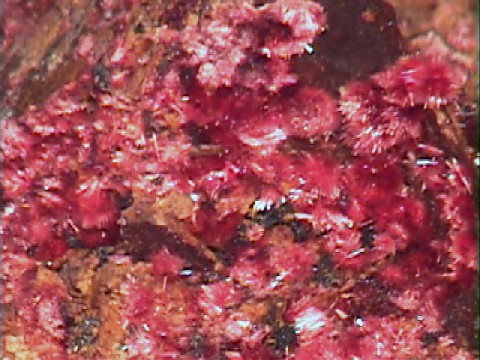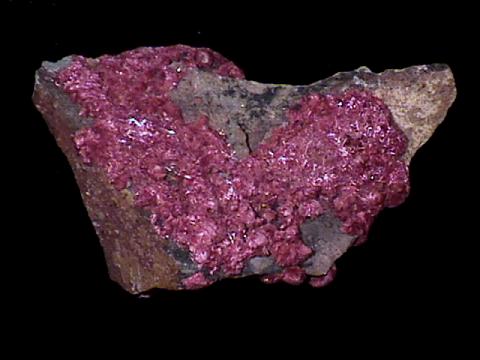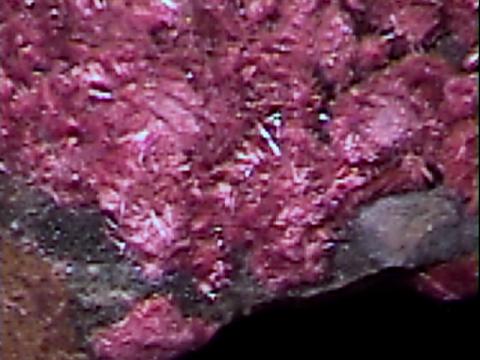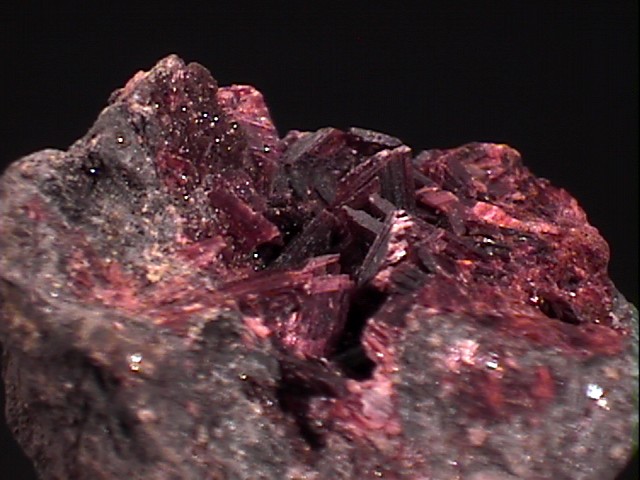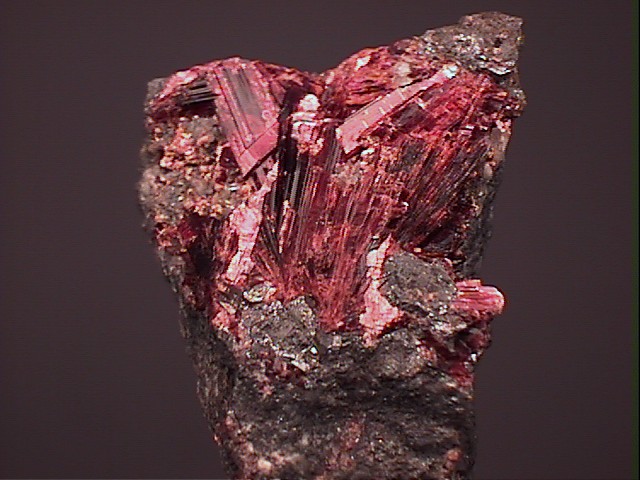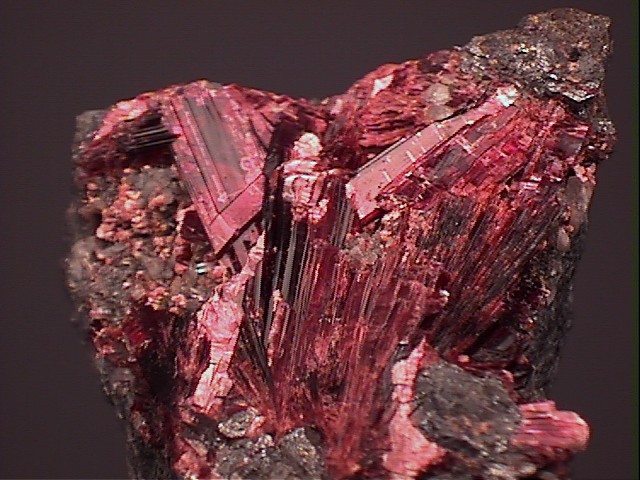 The Mineral
ERYTHRITE
The Mineral
ERYTHRITE
- Chemistry: Co3(AsO4)2-8(H2O) , Hydrated Cobalt Arsenate
- Class: Phosphates
- Group: Vivianite
- Uses: a very minor ore of cobalt and mineral specimens
- Specimens
Erythrite is a wonderful mineral for people who like striking, unusual colors.
Its characteristic bright red-purple color is very noticable and was used to spot veins of cobalt-bearing ore.
Erythrite, or "Cobalt Bloom" as it is called by miners, is a weathering product of cobalt-containing minerals such as
cobaltite.
Where weathered cobalt and nickel ores are found, both
annabergite, Ni
3(AsO
4)
2-8(H
2O) and erythrite become important markers.
Annabergite, called "Nickel Bloom", is bright green and is isostructural with erythrite.
"Isostructural" means that the two minerals have the same structure but different chemistries.
The two minerals are actually in a series where the nickel and cobalt ions can substitute freely for each other.
When the two ions are in near-equal concentrations the resulting color is gray or off-white.
A third mineral is also isostructural with erythrite and is called
kottigite or koettigite, Zn
3(AsO
4)
2-8(H
2O).
However, the series is incomplete, meaning that the zinc and cobalt ions only substitute for each other on a very limited basis.
Most erythrite is found in the form of crusts, but specimens from Morocco have larger crystals.
The unique red-purple color of erythrite is very attractive, and its nice sparkle make this mineral a joy to add to one's collection.
PHYSICAL CHARACTERISTICS:
- Color is deep red-purple to lighter pinks in massive and thin crust forms.
- Luster is vitreous.
- Transparency crystals are transparent to translucent.
- Crystal System is monoclinic; 2/m
- Crystal Habits include flattened, striated blades or radiating accicular crystals; crystals are rare.
More commonly as crusts or earthy masses.
- Cleavage is perfect in one direction.
- Fracture is uneven
- Hardness is 1.5 - 2.5
- Specific Gravity is approximately 3.1 (average for translucent minerals)
- Streak is pale red.
- Associated Minerals are silver, cobaltite, skutterudite, and other cobalt vein minerals.
- Other Characteristics: blades are flexible and sectile.
- Notable Occurences include Cobalt, Ontario; Bou Azzer, Morocco and Germany.
- Best Field Indicators are color, associations and flexible crystals.
 The Mineral
ERYTHRITE
The Mineral
ERYTHRITE
